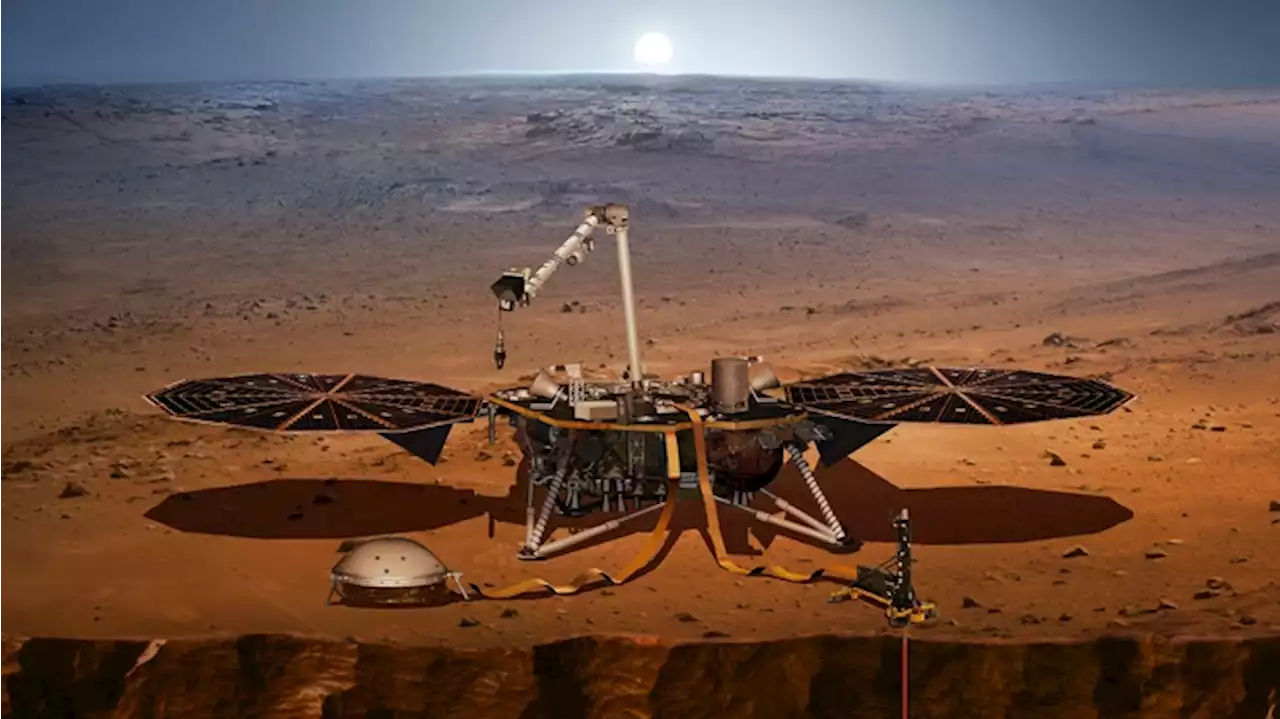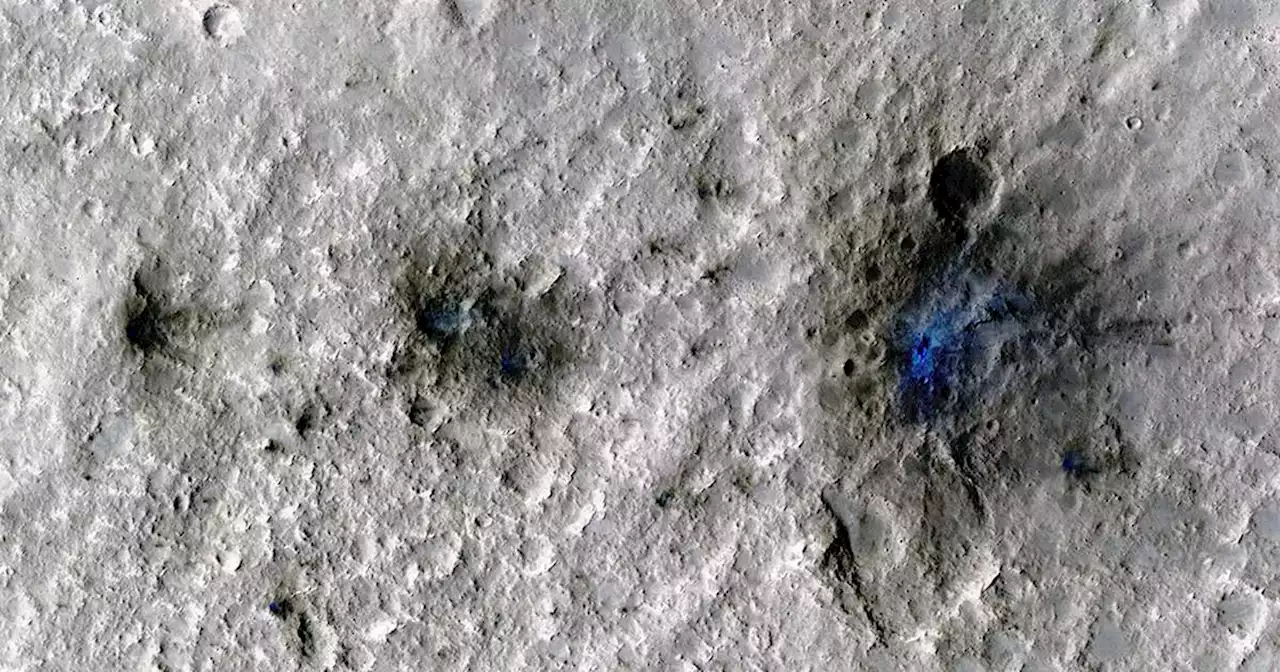A NASA lander on Mars has captured the vibrations and sounds of four meteoroids striking the planet’s surface.
This undated photo released by NASA shows craters that were formed by a Sept. 5, 2021, meteoroid impact on Mars, the first to be detected by NASAs InSight. Taken by NASAs Mars Reconnaissance Orbiter, this enhanced-color image highlights the dust and soil disturbed by the impact in blue in order to make details more visible to the human eye. NASA lander on Mars has captured the vibrations and sounds of four meteorites striking the planet's surface. Scientists reported Monday, Sept.
“After three years of InSight waiting to detect an impact, those craters looked beautiful,” Brown University's Ingrid Daubar, a co-author of the research paper in the journal Nature Geoscience, said in a statement. The InSight team expected to pick up numerous meteoroid strikes, given Mars' proximity to the asteroid belt and the planet's thin atmosphere, which tends to keep entering space rocks from burning up. But the lander's French-built seismometer may have missed impacts because of interfering noise from the Martian wind or seasonal changes in the atmosphere. Now scientists know what to look for, according to NASA, likely resulting in a surge of detections.
“Impacts are the clocks of the solar system,” French lead author Raphael Garcia said in a statement from the Higher Institute of Aeronautics and Space in Toulouse. “We need to know the impact rate today to estimate the age of different surfaces.”. The largest measured a magnitude 5 earlier this year. By comparison, the marsquakes generated by the meteoroid impacts registered no more than a magnitude 2.
Copyright 2022 The Associated Press. All rights reserved. This material may not be published, broadcast, rewritten or redistributed without permission.
United States Latest News, United States Headlines
Similar News:You can also read news stories similar to this one that we have collected from other news sources.
 In a first, NASA Mars lander feels shockwaves from meteor impactsThough nearing its end, the plucky InSight lander is still doing groundbreaking science—including the first observations of their kind on the red planet.
In a first, NASA Mars lander feels shockwaves from meteor impactsThough nearing its end, the plucky InSight lander is still doing groundbreaking science—including the first observations of their kind on the red planet.
Read more »
 NASA Lander Detects Sounds of Meteoroids on MarsLaunched in 2018, NASA's InSight has already detected more than 1,300 marsquakes.
NASA Lander Detects Sounds of Meteoroids on MarsLaunched in 2018, NASA's InSight has already detected more than 1,300 marsquakes.
Read more »
 NASA Mars lander captures strikes by 4 incoming space rocksA NASA lander on Mars has captured the vibrations and sounds of four meteoroids striking the planet’s surface.
NASA Mars lander captures strikes by 4 incoming space rocksA NASA lander on Mars has captured the vibrations and sounds of four meteoroids striking the planet’s surface.
Read more »
 NASA Mars lander captures strikes by 4 incoming space rocksA NASA lander on Mars has captured the vibrations and sounds of four meteoroids striking the planet's surface.
NASA Mars lander captures strikes by 4 incoming space rocksA NASA lander on Mars has captured the vibrations and sounds of four meteoroids striking the planet's surface.
Read more »
 NASA Mars lander captures strikes by 4 incoming space rocksCAPE CANAVERAL, Fla. (AP) — A NASA lander on Mars has captured the vibrations and sounds of four meteoroids striking the planet’s surface. Scientists reported Monday that Mars InSigh t detected seismic and acoustic waves from a series of impacts in 2020 and 2021.
NASA Mars lander captures strikes by 4 incoming space rocksCAPE CANAVERAL, Fla. (AP) — A NASA lander on Mars has captured the vibrations and sounds of four meteoroids striking the planet’s surface. Scientists reported Monday that Mars InSigh t detected seismic and acoustic waves from a series of impacts in 2020 and 2021.
Read more »
 NASA Mars lander captures strikes by four meteoroids hitting planet’s surfaceA NASA lander on Mars has captured the vibrations and sounds of four meteoroids striking the planet’s surface.
NASA Mars lander captures strikes by four meteoroids hitting planet’s surfaceA NASA lander on Mars has captured the vibrations and sounds of four meteoroids striking the planet’s surface.
Read more »
